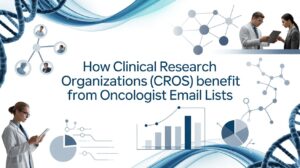A gap assessment is effective when it increases productivity by 40% and employee engagement by 50%, according to a report by McKinsey and Company.In spite of this popularity among healthcare market research companies, we have noticed a troubling trend: many of these analyses fail to deliver meaningful results.
Why is Gap Analysis Important in Healthcare?
Performing what is a gap analysis in healthcare is a systematic way to identify discrepancies between current performance and desired outcomes. Healthcare can identify areas of greatest risk in patient safety, care quality, and satisfaction, when executed properly. These insights, however, remain hidden without the right approach.
In this guide, we’ll explore why most healthcare gap analyzes fall short and provide a clear framework for doing them right. We’ll draw from real-world examples, including how the Diabetes Clinical Community at Johns Hopkins Medicine developed an effective gap analysis tool that successfully identified disparities in care delivery across their system.
Why Most Healthcare Gap Analyzes Fail
Many healthcare organizations invest considerable resources in gap analyzes, yet often see disappointing returns. Understanding why healthcare gap analysis efforts fail can help organizations avoid common pitfalls and maximize their effectiveness.
Lack of Clear Objectives and Scope
Healthcare organizations face unique challenges when defining the scope of gap analyzes. They must navigate multiple federal, state, and industry regulations that sometimes complement each other but often conflict. Furthermore, some regulations apply to certain operational areas but not others, creating confusion about which standards to prioritize. This complexity makes it difficult to establish clear objectives from the outset, consequently undermining the entire analysis process.
Overlooking Patient-Centric Data
A critical oversight in many gap analyzes is the exclusion of patient perspectives. According to research, effective gap analysis should include patients and families as key stakeholders. Additionally, organizations sometimes fail to define gaps based on patient outcomes, instead focusing solely on internal metrics. This approach misses crucial insights that could drive meaningful improvements in care delivery.
Failure to Involve Cross-Functional Teams
Health care delivery is inherently interdependent, requiring collaboration across disciplines. Nevertheless, most healthcare organizations have underinvested in structured practices for managing cross functional teams. Research indicates that healthcare units with ineffective interprofessional teams show the largest performance gaps in human resource management aspects . When team members from different disciplines don’t effectively synthesize their knowledge, the gap analysis lacks critical perspectives needed for comprehensive improvement.
Inadequate Follow-up and Monitoring
Even well conducted gap analyzes often falter during implementation. Without systematic monitoring mechanisms, organizations cannot track whether identified gaps are closing. Studies show that having a functional, dynamic, systemwide dashboard is essential for identifying areas needing intervention and evaluating the impact of those interventions. Organizations frequently fail to translate analysis findings into actionable steps with clear accountability structures, essentially rendering the entire exercise futile.
Understanding these common failure points provides a foundation for creating more effective gap analyzes that deliver tangible improvements in healthcare quality and operational efficiency.
What is a Gap Analysis in Healthcare?
Understanding gap analysis fundamentally changes how healthcare organizations approach improvement. A gap analysis in healthcare examines the difference between current performance and desired outcomes, providing a structured framework for identifying and addressing shortfalls in care delivery.
Definition and Purpose
Gap analysis serves as a systematic method for identifying discrepancies between reality and the ideal state for your organization. There are three essential questions to ask during this process Where are we now? Where do we want to be? How can we close the performance gap? The primary purpose is to improve care quality and patient outcomes by systematically uncovering areas needing improvement. Regular gap analyzes help maintain performance standards, particularly for accreditation requirements.
Types of Gaps: Service, Skills, Strategic
Healthcare Organizations Typically Encounter Several Distinct Types of Gaps:
Service Quality Gaps: The difference between patient expectations and their perception of services received. This includes misalignments in what providers think patients expect (Gap 1), expert opinions versus patient expectations (Gap 2), design issues in operations and processes (Gap 3), and human resource aspects like empathy and responsiveness (Gap 4).
Skills Gaps: Differences between staff’s current capabilities and required competencies.
According to McKinsey, addressing skills gaps can boost productivity by 40% and employee engagement by 50%.
Strategic Gaps: Variances in organizational processes and services that prevent achieving business goals.
Clinical Gaps: Differences between recommended clinical practices and actual care delivery.
Examples of Common Gaps in Healthcare Settings
Common healthcare gaps include disparities in access and outcomes among different populations, variations in care delivery for specific conditions, non adherence to clinical guidelines, inefficient provider communication, and incomplete documentation. Additionally, approximately 50% of patients don’t take medications as prescribed, creating one of the most prevalent gaps. Other examples include missed preventive screenings, medication management issues, and coordination breakdowns, with about 42% of senior citizens reporting poor care coordination.
Step-by-Step Guide to Doing It Right
Executing an effective healthcare gap analysis requires a systematic approach with specific steps. While many organizations struggle with implementation, following this structured methodology will yield meaningful results that drive improvements in care quality and operational efficiency.
1. Define your current state
The first step involves thoroughly assessing your organization’s present situation. Collect baseline data on your current processes and outcomes from multiple sources, including administrative policies, organizational structures, safety surveys, and quality plans. Document existing processes through a comprehensive review of organizational practices. Consider conducting focus groups with key stakeholders to gather candid feedback about current operations.
2. Set your ideal future state
Establish SMART specific, measurable, achievable, relevant, and time-bound) goals that clearly define what you want to accomplish. Your future state should represent evidence-based care delivered consistently for every patient every day. Refer to benchmarks, best practices, and regulatory requirements when setting these goals.
3. Identify the gaps
Compare your current performance with your ideal performance. Quantify both the shortfall and the improvement needed for each area. Determine whether gaps stem from knowledge deficits (not knowing), skill deficits (not knowing how), or practice deficits (not doing). Code and tally responses from stakeholder sessions to identify common themes and variations in perceptions.
4. Prioritize based on impact and feasibility
Not all gaps require immediate attention. Rank deficiencies based on factors such as risk to patient safety, compliance necessity, and resource availability. Use an impact feasibility matrix to categorize opportunities and focus first on high impact/high feasibility items. This strategic approach ensures efficient resource allocation toward areas with the greatest potential for meaningful improvement.
5. Create an action plan
Develop a detailed roadmap outlining specific actions needed to close identified gaps. For each gap, specify required actions, responsible parties, and clear timelines for completion.Track progress effectively by breaking the plan down into manageable milestones. Ensure the plan addresses both short term wins and long term sustainable improvements.
6. Monitor and adjust continuously
Implement your action plan while closely tracking progress through relevant metrics. Regularly assess both process measures (performance of standard procedures) and outcome measures (high level clinical or financial results). Based on real time feedback and changing conditions, make iterative adjustments. Identify new gaps during implementation by conducting periodic reassessments.
Techniques That Make Gap Analysis Work
Effective tools and methodologies make the difference between successful gap analysis and wasted effort in healthcare settings.The following techniques have been proven to yield measurable results.
Customer journey mapping
Customer journey mapping visualizes every interaction patients have with your healthcare organization, from initial contact through long term care. This technique identifies critical pain points and service gaps by examining the patient experience through their perspective. Most importantly, CJM uncovers leakage points where patients may abandon care and seek services elsewhere providing opportunities for immediate improvement. Process mining technology enhances this approach by automatically extracting knowledge from existing information systems rather than relying on subjective manual processes.
Benchmarking against industry standards
Benchmarking compares your organization’s performance against established standards or high-performing peers. Recognized since the 1990s as a valuable method for identifying strengths and weaknesses, benchmarking helps detect unwarranted variations in healthcare practices. The CMS Innovation Center utilizes benchmarks to calculate prices for healthcare
Services and Monitor Model Effectiveness by Measuring:
- How payments might change during testing
- Historical payment patterns
- Patient characteristics and health profiles
Using SWOT for internal assessment
SWOT analysis examining Strengths, Weaknesses, Opportunities, and Threats provides a structured framework for comprehensive internal assessment. Healthcare organizations can leverage specific metrics including patient satisfaction scores, readmission rates, staff turnover, operational efficiency, and financial performance indicators. Importantly, SWOT analysis helps identify gaps between your current operations and compliance standards, forming the foundation for targeted improvement plans.
Leveraging data analytics tools
Data analytics platforms represent a game-changer for healthcare gap analysis. In order to extract actionable insights from healthcare data, these systems consolidate vast amounts of structured and unstructured information. Through the analysis of past medical records, current health status, lifestyle choices, genetic data, and artificial intelligence, these platforms can predict care gaps before they occur, and socioeconomic factors. This predictive capability allows healthcare providers to implement preventive measures rather than merely responding to existing problems.
Conclusion
Healthcare gap analysis represent powerful tools for organizational improvement when executed correctly. Throughout this article, we’ve explored why traditional approaches often fall short while providing practical frameworks for success.
Undoubtedly, the difference between failed and effective gap analyzes comes down to methodology. Lack of clear objectives, overlooking patient perspectives, siloed teams, and poor follow through doom many well intentioned efforts from the start. Organizations must recognize these pitfalls before embarking on their assessment journey.
After all, properly conducted gap analyzes deliver remarkable results. McKinsey’s research confirms this reality, showing productivity improvements of up to 40% and significant boosts in employee engagement. Therefore, the return on investment justifies the effort required for comprehensive analysis.
Visit our website Med Stream Data for more healthcare industry related information!







